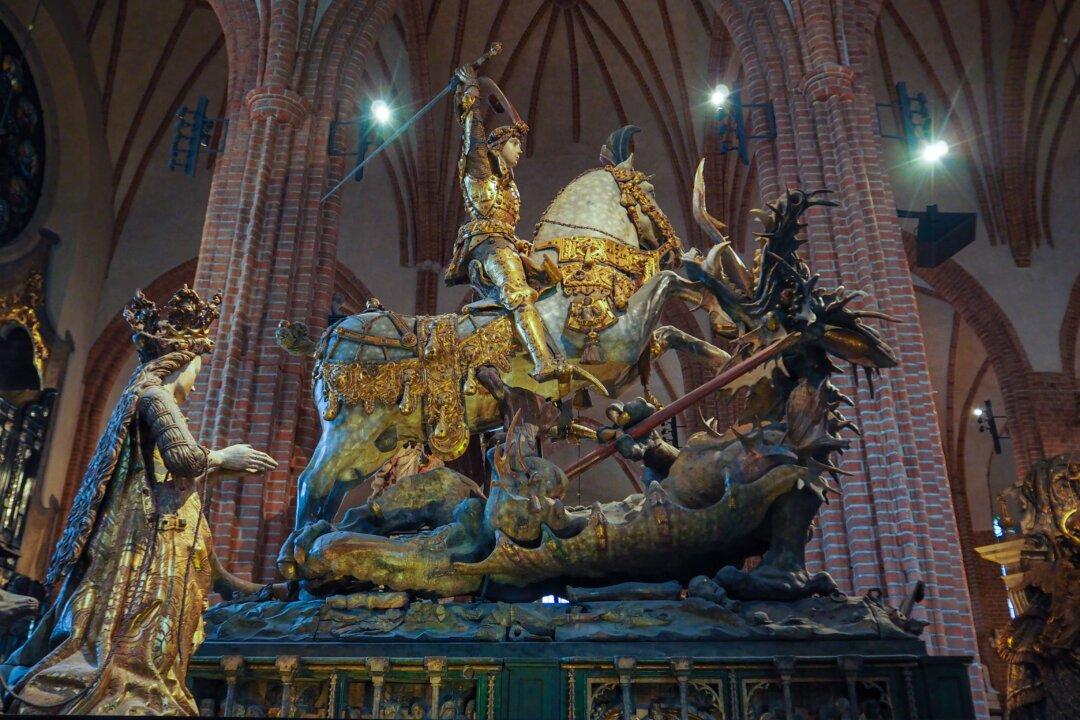WARSAW, Poland—I saw him as soon as I entered The White Hall of Wilanow Palace. On the far side of the room, a confident nobleman casually dressed in a white shirt, a velvet vest, leather trousers, and a blue sash, with a kind face and an open, approachable manner, sat astride his horse. He had a panache I couldn’t ignore. So I walked toward him.
I cherish such moments, for the man I was walking to meet was depicted on a canvas that was 9 feet, 11 5/8 inches by 7 feet, 1 3/4 inches—a portrait of Count Stanislaw Kostka Potocki, not the man himself. For me, that’s the epitome of great representational art: to feel that you’ve seen the essence of someone you’ve never met before and, in most cases, probably never will.

Potocki (1755–1821), a politician, collector, art patron, and literary critic, lived in Poland during the Enlightenment. He felt a responsibility to publicly open his Wilanow Palace home, which had once belonged to Poland’s celebrated warrior-king, King Jan III Sobieski (1629–1696).
I might not have been able to view Potocki’s portrait in the palace if it hadn’t been for the man himself. Potocki made his collections available for the public to see for free by turning Wilanow Palace into Poland’s first art museum, opening in 1805.
“Potocki was a very dedicated politician who fought for any possibility to preserve tradition at a time when it was forbidden,” curator Marta Golabek said. (Golabek works in the art department of Museum of King Jan III’s Palace at Wilanow.)
A French Masterpiece
French neoclassical painter Jacques-Louis David (1748–1825) painted this striking portrait of Potocki in 1781. It’s the only painting by the artist in Poland and a wonderful example of the artist’s work before he defined his monumental neoclassical style.David met Potocki in Italy, after the artist had won the esteemed Prix de Rome (a year’s scholarship in the French Academy in Rome). A Wilanow collections catalog from 1834 notes that the portrait was “taken from a sketch executed in a manège [horse arena] in Naples, prepared and put on display at a fine arts show in Paris in 1781, regarded as one of David’s best works.”
David became known for his neoclassical-style paintings that removed the fancy and frivolity seen in the previous Rococo (late Baroque) style, favoring paintings that expressed the ideals and harmony of ancient Roman art.

His portrait of Potocki reflects the energetic style of Flemish Baroque painter Peter Paul Rubens (1577–1640), who deftly painted pictures full of color, movement, and sensuality. David’s portrait of Potocki is close to the composition that Rubens used in a portrait sketch of George Villiers, the Duke of Buckingham.
David painted this portrait with a sense of theater: As Potocki takes his hat off, his horse seems to take a bow. But look closer; follow the horse’s gaze, and we can see that it has been startled by a barking dog. In general, the dog symbolizes loyalty, and the hunting dog painted here indicates Potocki’s noble status. David signed the date and his name on the dog’s collar.






